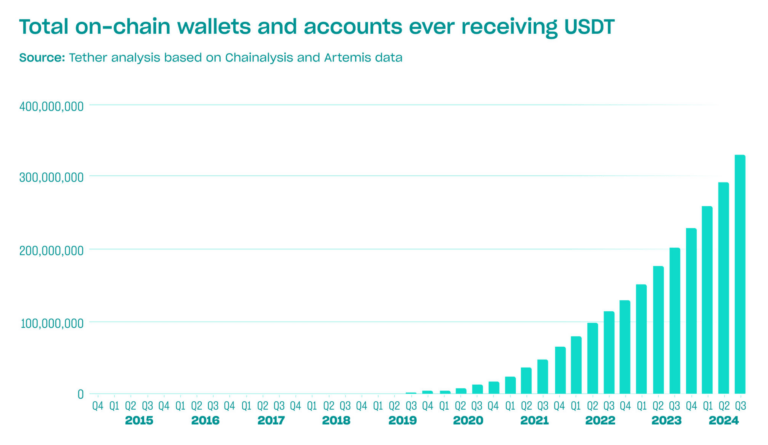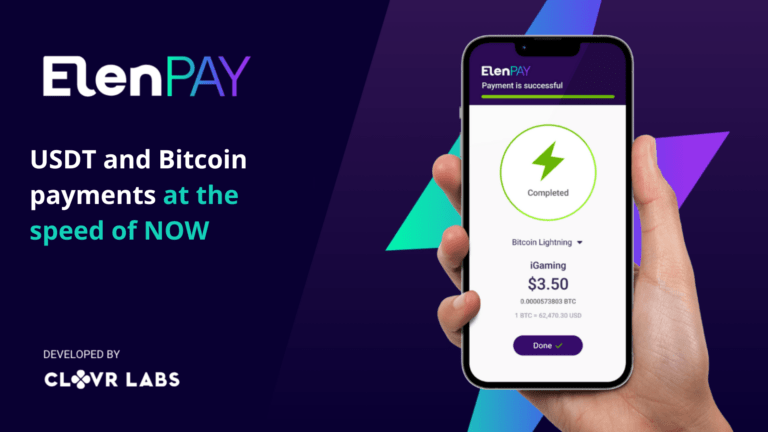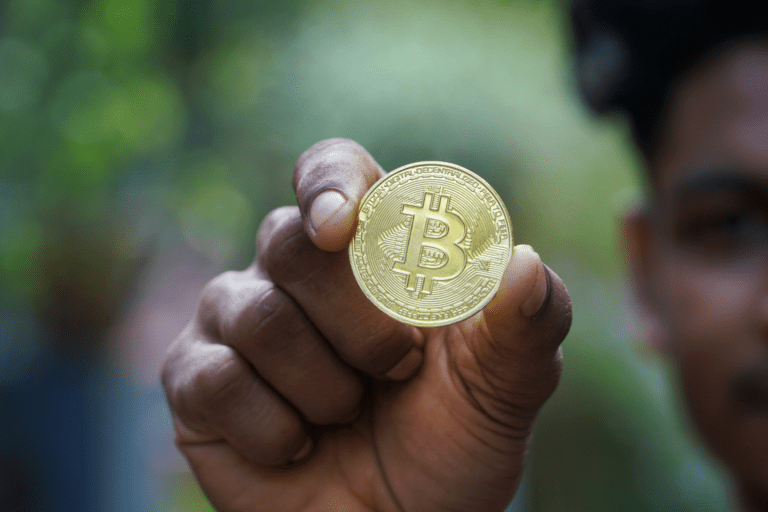USDT vs. Bitcoin: Which is the better choice for payments and business?
USDT vs. Bitcoin: two giants in the cryptocurrency ecosystem, each playing a pivotal role and serving a unique purpose and audience. There is no right or wrong, just different characteristics, market dynamics, and practical applications that reveal their distinct roles in the digital economy.
While USDT offers unparalleled stability, making it ideal for businesses needing predictable transaction values, Bitcoin captures attention with its significant potential for value appreciation, appealing to those looking to maximize investment opportunities.
Many of our clients ask us about the best cryptocurrency options for their online payments. In response, we will conduct a thorough analysis of each cryptocurrency’s strengths, providing a framework to help businesses choose the right set of coins based on their business needs, regulatory considerations, user base opportunities, and industry practices.

USDT Vs. Bitcoin overview
Although USDT and Bitcoin are both cryptocurrencies, they are fundamentally different and possess unique key characteristics that set them apart. Let’s explore these distinct features to understand their individual strengths before delving deeper into their user base and market dynamics.
USDT (Tether)
USDT, also known as Tether, was launched in 2014 as a stablecoin to provide a stable medium of exchange in the volatile cryptocurrency market. Its creation was intended to combine the best of both worlds: the immediate processing and security of blockchain technology with the stable valuation of the US dollar.
Key characteristics of USDT include:
- Stability: Pegged 1:1 with the US dollar, USDT offers a predictable and stable value, crucial for businesses and individuals looking to avoid the typical volatility of cryptocurrencies.
- Market Leadership: As one of the most widely used stablecoins, USDT holds significant influence in the crypto market, often acting as a safe haven during periods of high volatility.
- Multi-Blockchain Operability: USDT is unique in its broad compatibility with multiple blockchains, including Bitcoin, Ethereum, and Solana, facilitating diverse transaction needs ad user bases.
- Layer 2 Integrations: USDT is now supporting faster and cheaper transactions through Bitcoin’s Layer 2 Lightning Network solution, enhancing its scalability and usability in everyday transactions.
- Financial Inclusion: By providing a stable digital currency, USDT helps to extend financial services to underbanked and unbanked populations, particularly in regions with volatile currencies.
Bitcoin
Introduced in 2009 by the pseudonymous Satoshi Nakamoto, Bitcoin was the first cryptocurrency, envisioned as a decentralized digital currency without the need for a central authority.
Key characteristics of Bitcoin include:
- Decentralization: Bitcoin’s foundational principle is its operation on a decentralized network, which reduces risks associated with central points of failure and enhances security.
- Market Leadership: Bitcoin is not only the first but also the most recognized cryptocurrency globally, often referred to as ‘digital gold’ due to its pioneering status and investment appeal.
- Limited Supply: The total supply of Bitcoin is capped at 21 million coins, a deliberate design to prevent inflation and mimic precious metal scarcity.
- Layer 2 Optimizations: Bitcoin’s adoption of Layer 2 technologies like the Lightning Network addresses challenges related to scalability, transaction speed, and network fees, making it more efficient for frequent micro and mid-tier transactions.
- Enhanced Financial Inclusion: Bitcoin has been at the forefront of promoting financial inclusion by providing access to a secure and decentralized financial system for users worldwide, especially in areas lacking traditional banking infrastructure.
User base and market dynamics
As of March 2025, USDT and Bitcoin display distinct user bases and market dynamics influenced by different factors such as price fluctuations, institutional adoption, regulatory changes, and regional impacts.
USDT vs. Bitcoin user base:
USDT has experienced significant growth, now boasting over 400 million users globally, a substantial increase from 330 million at the end of 2024. This is a clear indicator of its rising importance in the global economy.
In contrast, only 106 million people own Bitcoin, but the combined value of Bitcoin makes up more than 50% of the total cryptocurrency market and tops the market cap with $2 trillion. About 2 billion people worldwide are already familiar with the cryptocurrency, so Bitcoin has deeper market penetration and enduring appeal.

USDT vs. Bitcoin market dynamics:
USDT remains the dominant stablecoin with a market cap of $137.5 billion, holding a 66% share of the stablecoin market. This shows its crucial role in the digital currency space.
On the other hand, Bitcoin’s market dynamics are marked by a significant price peak of over $100,000 in 2024, with a current price of around $87,000 as of March 2025. Its market is primarily sustained by substantial institutional investments, particularly evident in the growing adoption of Bitcoin ETFs, which are projected to manage up to $250 billion by the end of the year.
USDT vs. Bitcoin regulation and regional impact:
USDT has been significantly affected by the implementation of the MiCA, DAC8, and Travel Rule regulations, which have introduced more stringent requirements for stablecoins. It notably faced a $4 billion redemption in the days leading up to its implementation. And although it doesn’t seem to be affecting its market share leadership, regulations are undoubtedly shaping its use and institutional trust.
Meanwhile, Bitcoin appears to be less directly impacted by these specific regulations and may benefit from potentially more crypto-friendly administrations. In terms of regional use, Asia remains the region with the most crypto owners in the world, followed by Europe as the second-largest cryptocurrency market. North America is the world’s leading region for crypto use and transaction volume, and Latin America is among the fastest-growing regions for crypto penetration.
Migration from L1 to L2 networks:
The migration from Bitcoin’s primary blockchain (Layer 1) to its faster, more efficient secondary layers (Layer 2) is also something to consider in terms of market dynamics, as it’s becoming increasingly common, especially for everyday payments.
Nowadays, over 650 million people have access to Bitcoin. With Bitcoin’s Layer 2 Lightning Network offering quicker transaction times, lower fees, enhanced scalability, and better user experiences, the transition from Bitcoin L1 to L2 is crucial for Bitcoin’s evolution from a speculative asset to a functional currency for everyday use.
Optimal use cases for USDT and Bitcoin in payments
USDT and Bitcoin offer distinct advantages for different payment scenarios, catering to various needs within the business environment. The adoption of USDT for payments is particularly strong in emerging markets and industries that require frequent cross-border transactions or operate in areas with economic instability. Whereas Bitcoin is used more for large payments and store of value, although we are witnessing how the use of Layer 2 networks facilitates microtransactions and everyday payments.
Here are some common use-case scenarios for each:
USDT payments scenarios:
- USDT is perfect for businesses that require stable pay-in and pay-out values for budgeting and financial planning, ensuring that transaction amounts remain consistent despite market volatility.
- For companies dealing with international suppliers or customers, USDT provides a straightforward solution for fixed-value transactions, eliminating concerns about fluctuating exchange rates.
- Websites that handle high volumes of consecutive payments may use USDT to help ensure alignment between treasury balances and sales data in real time, maintaining financial stability and operational clarity.
Bitcoin payments scenarios:
- Companies making large, one-time payments or settlements may choose Bitcoin to potentially benefit from its price appreciation, offering a chance to increase the value of their transaction over time.
- Businesses might hold Bitcoin as a strategic reserve asset, considering its historical long-term growth and potential as a hedge against currency devaluation.
- Through the use of the Lightning Network (L2), Bitcoin is ideal for handling microtransactions due to its lower transaction fees and faster processing times.
USDT vs. Bitcoin: which coin is better?
The choice between USDT and Bitcoin will always depend on each company’s goals, operational needs, and regulatory context. Both cryptocurrencies offer clear advantages, but they cater to different use cases. Here’s a comparison to help you decide:
When to Choose USDT
You need stability: Ideal for businesses that require consistent and predictable transaction values.
You manage frequent payments: Perfect for daily operations, fixed budgets, and financial planning.
You handle international transactions: Eliminates concerns about fluctuating exchange rates.
You operate in regulated industries: Supports compliance in sectors where financial stability is essential.
You want to avoid handling conversions: Its 1:1 peg to the dollar simplifies pricing and removes the need to convert to a more stable currency.
When to Choose Bitcoin
You want potential appreciation: Useful for high-value payments that could increase in value over time.
You want to diversify assets: Acts as a strategic reserve and a hedge against currency devaluation.
You’re interested in global liquidity: As the most recognized cryptocurrency, it has wide reach and acceptance.
You prefer decentralized systems: Reduces reliance on financial intermediaries and enhances security.
You process microtransactions: Through networks like Lightning, it enables fast, low-fee payments.
You don’t mind handling conversions: You’re comfortable managing exchange rate fluctuations and converting between crypto and fiat or between different cryptocurrencies as needed.
In short, there’s no universally “better” option—just the one that best fits your strategy. Some companies decide to use one or combine both cryptocurrencies to obtain the best of them in their best action scope.

ElenPAY is facilitating payment in both USDT and Bitcoin
ElenPAY understands the unique demands and benefits of using different cryptocurrencies for business transactions. To accommodate diverse business needs and financial strategies, ElenPay offers robust support for both USDT and Bitcoin in the Lightning Network, ensuring that businesses can leverage the specific advantages of each asset according to their operational requirements.
- Seamless integration options: ElenPay provides seamless integration options for both USDT and Bitcoin, enabling businesses to easily incorporate these cryptocurrencies into their payment systems.
- Flexible currency options: Support for both coins allows businesses to choose the optimal currency for each transaction type, enhancing financial strategy and customer satisfaction.
- Instant swaps: With instant Bitcoin to USDT swaps, you don’t have to commit exclusively to one or the other, offering flexibility in managing crypto assets.
- Regulatory compliance: ElenPay ensures all transactions are compliant with local and international laws, as well as industry-specific regulations, giving businesses peace of mind.
- Expert support: A team of experts will offer you technical support and customer service to help businesses manage and troubleshoot their cryptocurrency transactions effectively.
With ElenPAY, businesses integrate and benefit from both USDT and Bitcoin payments in the Lightning Network, unlocking everyday crypto payments and potentially expanding their market reach.
Book a demo now and start offering USDT and Bitcoin payments on your website.







